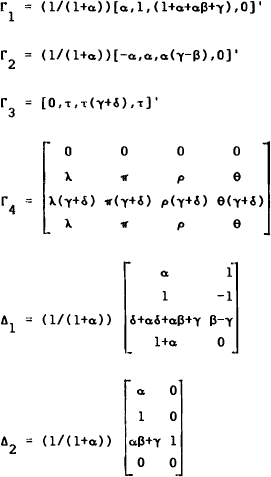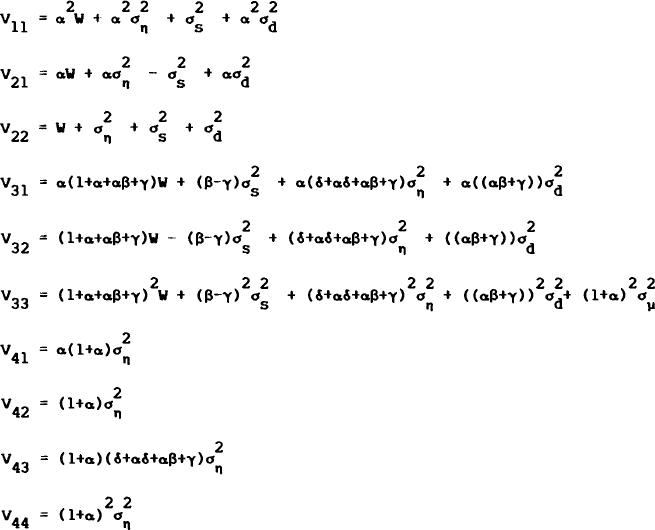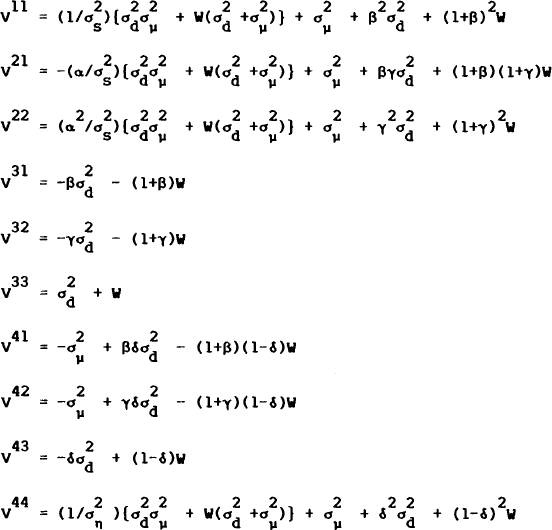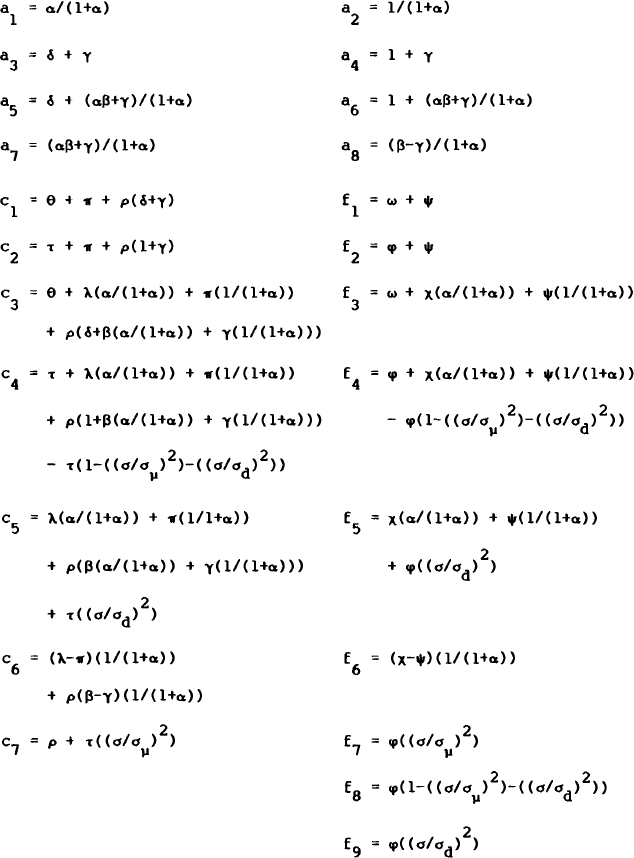RDP 8601: New Classical Models and Unobserved Aggregates Appendix
February 1986
- Download the Paper 913KB
The coefficient matrices of the compacted model given in equation (12) are
To solve for the recursive set of equations that determine the vector of Kalman filter weights, use equations (11) and (12) to give
and
Using these two equations to evaluate the variance and covariance terms needed in (14) yields
and
Denoting var  , and substituting these expressions into (14) gives
, and substituting these expressions into (14) gives
as the expression for Kalman coefficients. Taking the variance of both sides of equation (A1) results in
or, more compactly
Using the filtering formula (13) to substitute out for tzt shows that
Taking variances of both sides and noting the definition in (14) gives
or in compact notation
In order to derive the covariance stationary solution to the recursive Kalman filter given by equations (13), (15), (16) and (17), combine equations (15) and (17) to get,
and then use (16) to yield,
The stationary solution for  is then the solution to the quadratic
in σ2,
is then the solution to the quadratic
in σ2,
Denote the matrix  by V. This is the symmetric matrix var(xt − t−1xt) and by
using the definitions in equation (12) its lower triangular elements are Found to be (1+α)−2
times the following entries,
by V. This is the symmetric matrix var(xt − t−1xt) and by
using the definitions in equation (12) its lower triangular elements are Found to be (1+α)−2
times the following entries,
where  . The inverseof V may be found by
a sequence of elementary row operations.
. The inverseof V may be found by
a sequence of elementary row operations.
Its elements are  times
the entries,
times
the entries,
Substituting back into equation (A4) gives,
which is the quadratic in σ2,
The stationary solution for σ2 is then the positive root of the solution[28]
Given this stationary solution for σ2, the stationary solution for the Kalman weights may be found by substituting into equation (15)
Judicious use of equations (A5) and (A6) reduces this to
which proves the Lemma in the text. Substituting these weights into equation (13) and using
equation (A2) to substitute out the terms in Yt, Pt,  and
Bt gives equation (19).
and
Bt gives equation (19).
The elements of the coefficients matrices for equations (20) and (21) are
It only remains to show that σ2 solves the quadratic in equations (26) and (27). This quadratic is
by equation (A6).
Footnote
From the coefficients of the quadratic in A(6), the product of the roots must be negative. This solution thus yields a unique, positive (real) value for σ2. [28]






















